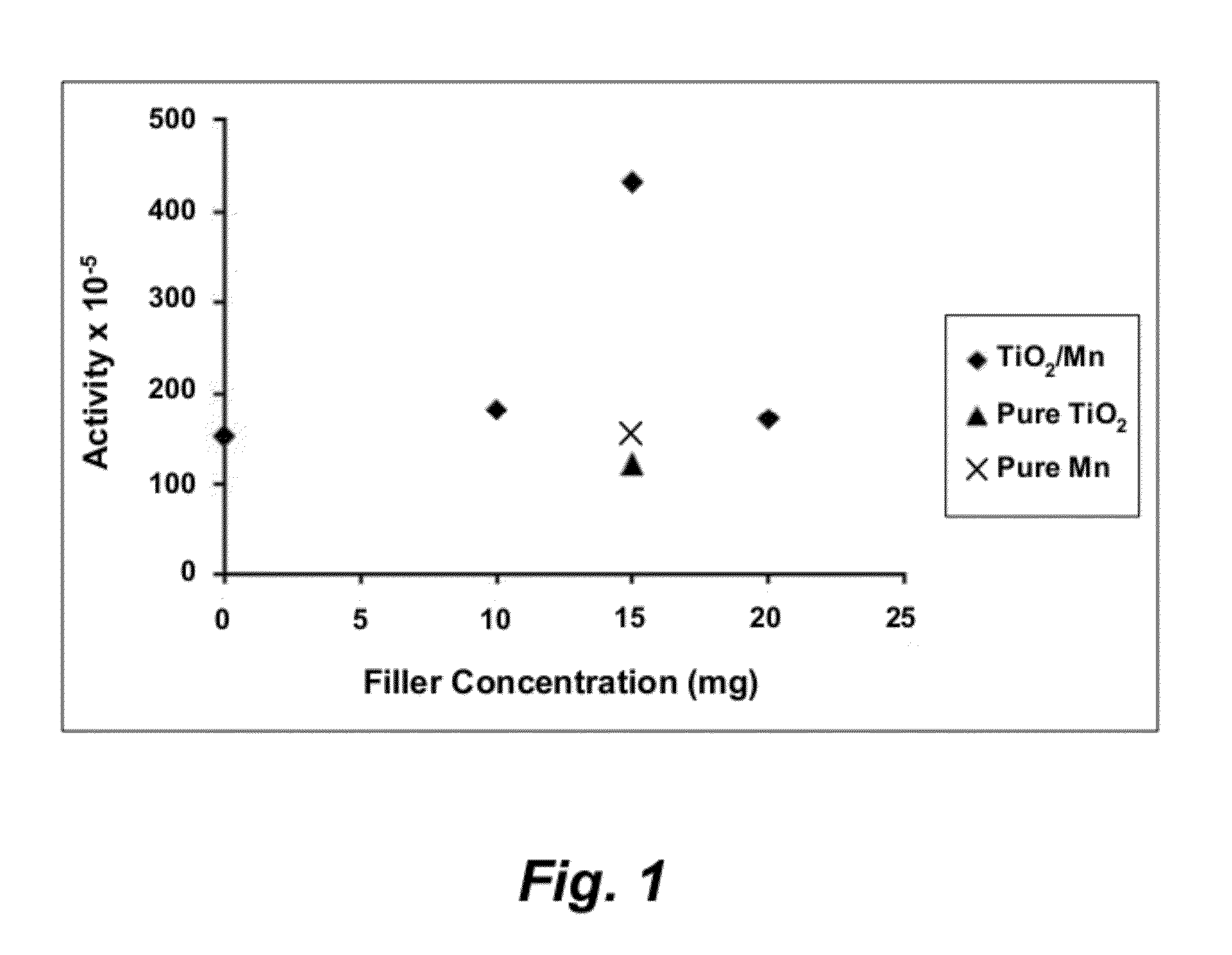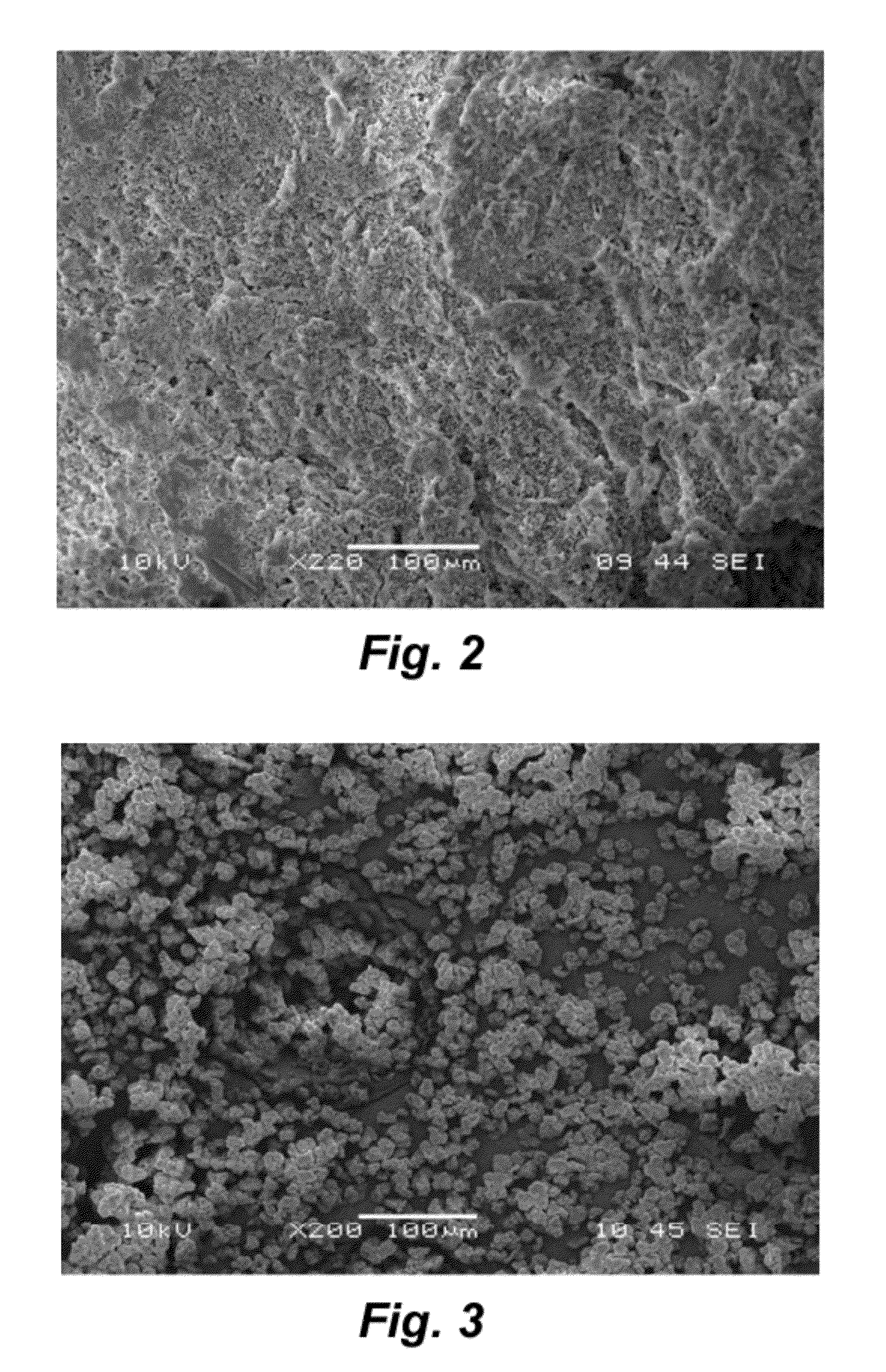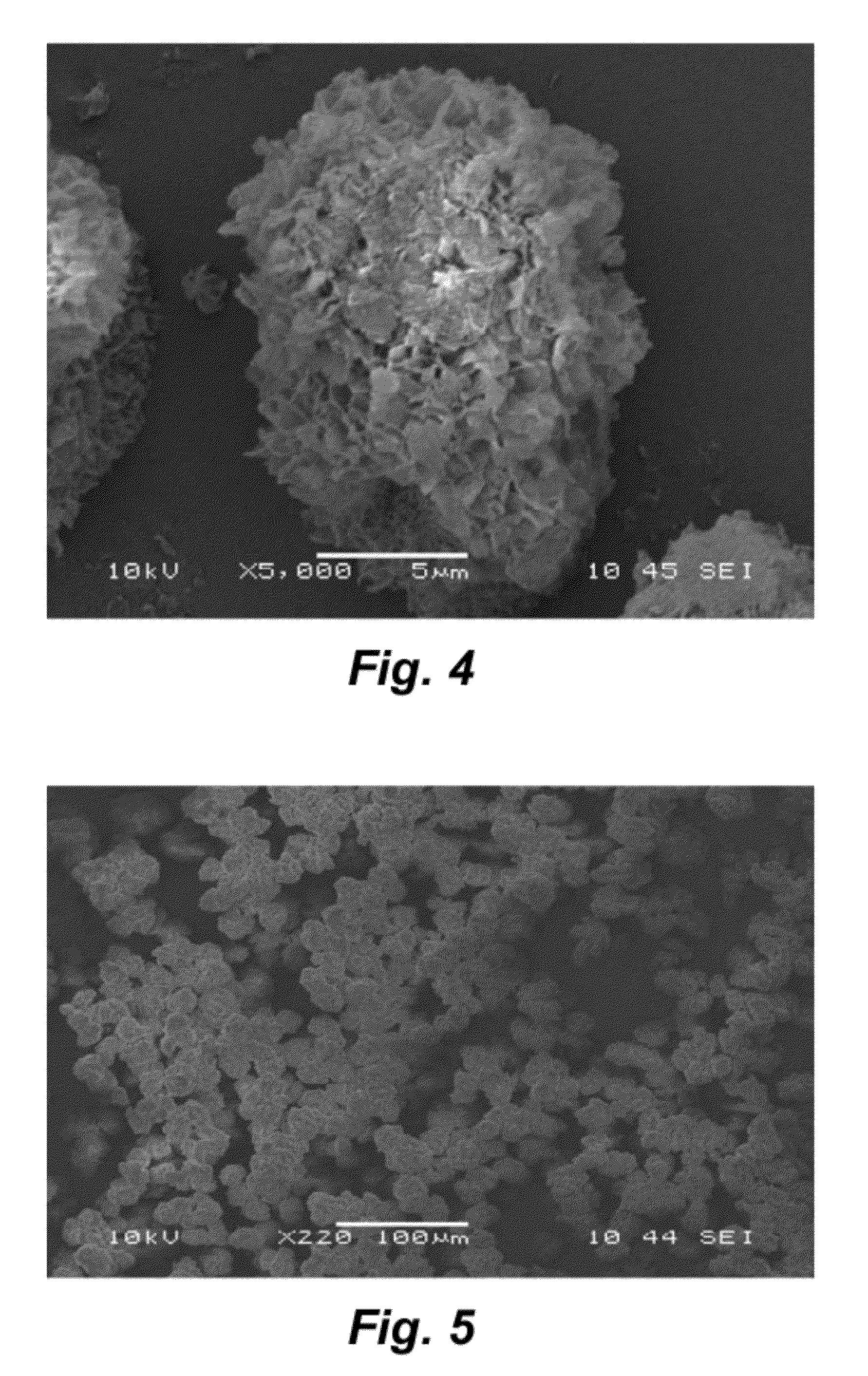Method of promoting olefin polymerization
a technology of olefin and polymerization, which is applied in the field of polyolefins, can solve the problems of unsatisfactory stiffness and low temperature toughness, affecting the properties of polymer composites, and wide use of olefins, so as to promote olefin polymerization, increase the activity of a metallocene catalyst, and optimal polymerization reaction temperature
- Summary
- Abstract
- Description
- Claims
- Application Information
AI Technical Summary
Benefits of technology
Problems solved by technology
Method used
Image
Examples
example
[0018]All manipulations were carried out under N2 using standard Schlenk and glove box techniques. Titanium (IV) dioxide containing Mn as dopant (a nanopowder of TiO2 / Mn, the particles having a size less than 100 nm), zirconocene catalyst (Cp2ZrCl2), and all other chemicals were purchased from Aldrich Chemicals and used without further purification.
[0019]Scanning electron microscope (SEM) images were taken by HITACHI S-4200. Transmission electron microscope images were taken by JEOL, JEM 2011 (for high resolution TEM) and HITACHI H-7600.
[0020]A series of ethylene polymerizations were performed in a 250 mL round-bottom flask (the reactor) equipped with a magnetic stirrer and a thermometer. The 20.5 μmol of the catalyst (zirconocene dichloride) and the amount of filler for each sample (as specified in Table 1) were added to the flask and the reactor was charged with toluene (80 mL). The reaction mixture was subjected to ultrasonication for 10 minutes. The reactor was immersed in a con...
PUM
| Property | Measurement | Unit |
|---|---|---|
| Temperature | aaaaa | aaaaa |
| Fraction | aaaaa | aaaaa |
| Time | aaaaa | aaaaa |
Abstract
Description
Claims
Application Information
 Login to View More
Login to View More - R&D
- Intellectual Property
- Life Sciences
- Materials
- Tech Scout
- Unparalleled Data Quality
- Higher Quality Content
- 60% Fewer Hallucinations
Browse by: Latest US Patents, China's latest patents, Technical Efficacy Thesaurus, Application Domain, Technology Topic, Popular Technical Reports.
© 2025 PatSnap. All rights reserved.Legal|Privacy policy|Modern Slavery Act Transparency Statement|Sitemap|About US| Contact US: help@patsnap.com



